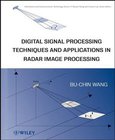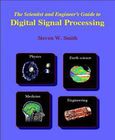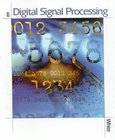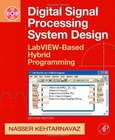Digital Signal Processing
Laboratory Experiments Using C and the TMS320C31 DSK
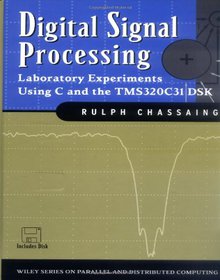
Book Details:
| Publisher: | Wiley-Interscience |
| Series: | Wiley , Using |
| Author: | Rulph Chassaing |
| Edition: | 1 |
| ISBN-10: | 0471293628 |
| ISBN-13: | 9780471293620 |
| Pages: | 328 |
| Published: | Nov 16 1998 |
| Posted: | Nov 19 2014 |
| Language: | English |
| Book format: | |
| Book size: | 2.83 MB |
Book Description:
A practical guide to using the TMS320C31 DSP Starter KitWith applications and demand for high-performing digital signal processors expanding rapidly, it is becoming increasingly important for today's students and practicing engineers to master real-time digital signal processing (DSP) techniques.Digital Signal Processing: Laboratory Experiments Using C and the TMS320C31 DSK offers users a practical--and economicalm--approach to understanding DSP principles, designs, and applications. Demonstrating Texas Instruments' (TI) state-of-the-art, low-priced DSP Starter Kit (DSK), this book clearly illustrates and integrates practical aspects of real-time DSP implementation techniques and complex DSP concepts into lab exercises and experiments. TI's TMS320C31 digital signal processor provides substantial performance benefits for designs that have floating-point capabilities supported by high-level language compilers.Most chapters begin with a theoretical discussion followed by representative examples. With numerous programming examples using TMS320C3x and C code included on disk, this easy-to-read text: * Covers DSK tools, the architecture, and instructions for the TMS320C31 processor * Illustrates input and output * Introduces the z-transform * Discusses finite impulse response (FIR) filters, including the effect of window functions * Covers infinite impulse response (IIR) filters * Discusses the development and implementation of the fast Fourier transform (FFT) * Examines utility of adaptive filters for different applicationsBridging the gap between theory and application, this book furnishes a solid foundation for DSP lab or project design courses for students and serves as a welcome, practically oriented tutorial in the latest DSP techniques for working professionals.
Download Link:
Related Books:
Digital Signal Processing
Techniques and Applications in Radar Image Processing
A self-contained approach to DSP techniques and applications in radar imagingThe processing of radar images, in general, consists of three major fields: Digital Signal Processing (DSP); antenna and radar operation; and algorithms used to process the radar images. This book brings together material from these different areas to allow readers to gain a thorough understanding of how radar images are processed.The book is divided into three main parts and covers:* DSP principles and signal characteristics in both analog and digital domains, advanced signal sampling, and interpolation techniques* Antenna theory (Maxwell equation, radiation field from dipole, and linear phased array), radar fundamentals, radar modulation, and target-detection techniques (c...
The Scientist and Engineer's Guide to Digital Signal Processing
2nd Edition
In the early 1980s, DSP was taught as a graduate level course in electrical engineering. A decade later, DSP had become a standard part of the undergraduate curriculum. Today, DSP is a basic skill needed by scientists and engineers in many fields. Unfortunately, DSP education has been slow to adapt to this change. Nearly all DSP textbooks are still written in the traditional electrical engineering style of detailed and rigorous mathematics. DSP is incredibly powerful, but if you can't understand it, you can't use it! This book was written for scientists and engineers in a wide variety of fields: physics, bioengineering, geology, oceanography, mechanica...
Digital Signal Processing
A Filtering Approach
This new resource introduces the concepts, equations, and terminology of Digital Signal Processing, and also provides the tools needed to analyze and design digital filters. With emphasis on digital filtering, this book applies the reader's knowledge of AC circuits, trigonometry, algebra, calculus and analog filter design to digital signal processing. This book also assists users in the understanding and use of available digital filtering software to meet design criteria....
Digital Signal Processing System Design
LabVIEW-Based Hybrid Programming
2nd Edition
This book combines textual and graphical programming to form a hybrid programming approach, enabling a more effective means of building and analyzing DSP systems. The hybrid programming approach allows the use of previously developed textual programming solutions to be integrated into LabVIEW's highly interactive and visual environment, providing an easier and quicker method for building DSP systems. This book is an ideal introduction for engineers and students seeking to develop DSP systems in quick time. Features . The only DSP laboratory book that combines textual and graphical programming . 12 lab experiments that incorporate C/MATLAB code blocks i...
2007 - 2021 © eBooks-IT.org

